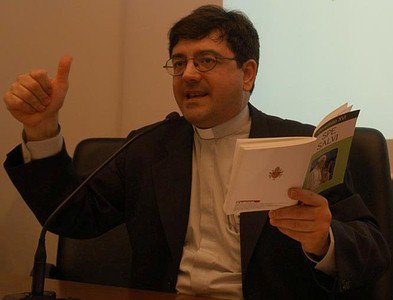Saint Augustine. You can know only what you love
Still nowadays, Saint Augustine is the most widely read Christian author. The Confessions are his masterwork; the most widely sold religious text, even among the non-believers. Why this success? Why did his words stir such a vibration of the heart in so many generations? It may seem strange, but the reason is that Saint Augustine has simply –but, at the same time, decisively- been a man, someone who kept being the same, always loyal to his needs, so much so that he never came to a compromise with the desire of his wounded heart.
This is the reason why reading his works, and in particular the Confessions, we feel at home. We wish we could be like him; because, in the end, we are like him. He continuously witnesses to us the
openness of his heart that never gets satisfied by anything. Through the most different experiences, Saint Augustine finally acknowledges that his desire, awakened by finite creatures, tends towards something infinite. He understands this at the end of his journey.
But he surprises us by putting it at the beginning of his Confessions, as if to remind us of our own original nature: “You have formed us for Yourself, o Lord, and our hearts are restless till they find rest in You” (Confessions I, 1, 1). Therefore, our restlessness is the true expression of our being human. For this reason, Saint Augustine challenges us: without following this desire nothing satisfies us. Without reawakening this love towards ourselves, no experience may make us truly happy.
The exhibition titled “You can know only what you love” stems from this. It is dedicated to the great bishop and Doctor of the Church and it is showed for the first time at the Meeting of Rimini. It accompanies the visitor –through Saint Augustine’s witness- to experience how the event of the knowledge of God and of the I is the only road that brings to happiness, because “what else is to live happily if not possessing something eternal, by knowing it?” Therefore, knowing means to love the truth, because “you don’t know any good perfectly, unless you love it perfectly” (Diverse questions 35, 2).
The tour will be furnished with unpublished and multimedial sets, with three-dimensional scenographies in order to listen to Augustine “in person”. Ancient manuscripts will be displayed that have been chosen within the huge literary production of the bishop of Ippona. As his friend and first biographer Possidio, we too would have liked to listen to him “in person”, because “I believe that they were able to derive greater good from him who heard and saw him as he spoke in person in the church, and especially those who knew well his manner of life among men” (Life of Saint Augustine, 31). “Yes, we too would have loved to be able to listen to him in person. But he is truly alive in his writings, he is alive in us” (Benedict XVI). This is the reason and the tone of this exhibition: to get to know Saint Augustine getting directly in touch with him. Let Saint Augustine speak; more than speak about Saint Augustine.
In collaboration with: Bonino Giorgio, Boselli Roberto, Brizzi Michela, Busetto Samuele, Cesarini Mirko, Colli Andrea, Massone Grazia, Mereghetti Gianni, Rigozzi Laura, Severgnini Matteo, Valdes Giovanni










